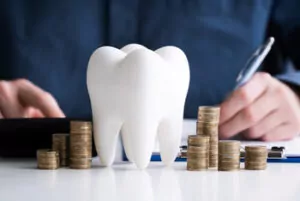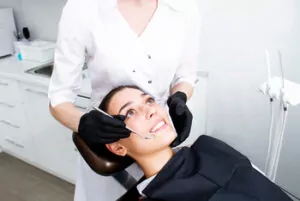With the expansive and ever-evolving digital realm, businesses today continuously search for website design inspiration that can set them apart. Dental practices are no exception. They’re realising the power of a stellar web presence in attracting new patients and providing relevant information.
After all, the best website designs aren’t merely about aesthetics but also about creating an engaging and accessible user experience. Let’s delve into the world of design inspiration and discover how you can craft a dental website that stands out.
Why Seek Website Design Inspiration?
In an age where the first point of contact between a potential patient and a dental practice often happens online, the design of your website becomes crucial. Web design inspiration is not just about imitating the best website designs out there. It’s about understanding design elements that work and translating them to suit your brand and the dental industry.
Unearthing the Best Website Design Ideas for Your Dental Practice
In the vast realm of website design, it’s easy to feel inundated. But, narrowing down your focus is essential. Your aim isn’t about replicating the best website out there; it’s crafting an online presence that mirrors the essence of your dental practice and resonates with your prospective patients.
Web Galleries:
Diverse platforms such as Commerce Cream, CSS Nectar, and Land-book are treasure troves showcasing the crème de la crème of web designs. Their robust tagging system aids in narrowing down selections based on specific design styles and prevalent trends. Delve into the editor’s note for a deep dive into the nuances that make these designs stand out.
Award-winning Sites:
When your own website wins an award, it’s an affirmation of its design excellence. These sites encapsulate inventive flair, impeccable functionality, and superior user experience. They serve as exemplary references when seeking top-tier design insights.
Competitor Analysis:
Sometimes, inspiration lurks closer than you think. Scanning through competitor dental websites offers a dual advantage: understanding current industry trends and pinpointing gaps in their design that you can capitalise on.
Broaden Your Horizons:
While dental-specific sites offer industry-relevant insights, occasionally casting your net wider can yield unexpected gems. Industries outside dentistry might employ pioneering design elements, introducing fresh perspectives and innovative concepts to your design board.
Key Design Elements to Illuminate Your Dental Site
Visual Content:
Imagery speaks. Top-tier photographs, particularly transformational before-and-after shots, provide tangible evidence of your expertise. Integrating illustrative art offers a refreshing detour from the usual, adding a touch of creativity to your site.
Homepage Design:
Your homepage is the virtual reception of your dental practice. Prioritise elements that resonate most with your target audience. Perhaps it’s a soothing colour palette to assuage dental anxieties or a regularly updated blog that demystifies dental myths; your homepage should serve as an authentic reflection of your practice’s ethos.
Mobile Optimisation:
With an ever-increasing segment of users surfing via mobiles, ensuring your website scales gracefully across varying device dimensions is paramount. The mobile experience should be seamless, retaining all core functionalities and aesthetic appeal.
Intuitive Navigation:
A website’s user-friendliness can significantly impact visitor retention. Whether a user aims to schedule an appointment, delve deeper into specific dental procedures, or gauge your credibility through patient testimonials, the journey should be smooth and intuitive.
Incorporate Branding:
Branding isn’t just about logos. The culmination of colour themes, typography, voice, and imagery crafts a cohesive narrative. Ensure this narrative consistently threads through every page, maintaining uniformity and enhancing recognisability.
Translating Inspiration into Your Dental Website’s Reality

With the digital landscape in perpetual flux, adaptability becomes crucial. Stay attuned to evolving design paradigms, keep tabs on what competitors innovate, and always be receptive to feedback, especially from your clientele who interact with your website.
15 Web Design Ideas That Dental Clinics Should Consider Incorporating
Creating a dental website that captures your clinic’s essence and communicates effectively with potential patients requires some creativity and inspiration. Here are 15 web design ideas tailored for dental clinics, ensuring a combination of aesthetics and functionality.
- Interactive Smile Gallery: Allow users to interact with before-and-after pictures of dental procedures. The best website gallery showcases your expertise and helps patients visualise potential outcomes.
- Animated Patient Journeys: Create a step-by-step animated journey of a typical patient. This concept eases anxieties and familiarises new patients with your clinic’s processes.
- 3D Virtual Tours: Offer prospective patients a 3D tour of your dental clinic. This immersive experience provides an insight into the environment they’ll be stepping into, cultivating comfort and trust.
- Integrated Booking System: Marry functionality with design by including a sleek, user-friendly appointment booking system right on the homepage. A clear call-to-action, coupled with ease of use, can significantly boost appointment bookings.
- Personalised Dentist Profiles: Instead of just listing qualifications, design a unique web page for each dentist, incorporating videos, personal anecdotes, and even patient testimonials. This helps patients connect on a personal level.
- Educative Video Content: Integrate videos explaining common dental procedures, dental care tips, or even a behind-the-scenes look at your clinic. This not only educates but also engages visitors.
- Dynamic Testimonials: Rather than static text, consider video testimonials or interactive sliders that highlight positive patient feedback, ensuring credibility and building trust.
- Illustrative Procedure Guides: Use custom illustrations to explain dental procedures simply and engagingly. This lightens the tone and makes complex processes easily digestible.
- Interactive FAQ Section: Design a dynamic FAQ section where common queries expand to show answers. Integrating a search feature further streamlines the user experience.
- Live Chat Integration: Implementing a live chat feature, especially one with a well-designed chatbot, can address immediate queries and provide instant assistance, enhancing user experience.
- Mobile-First Design: Given the increasing number of mobile users, design your website, keeping mobile interfaces in mind. Ensure seamless functionality and a consistent aesthetic across all devices.
- Gentle Colour Schemes: Soft pastel colours evoke calmness and trust. Consider muted blues, soft greens, or light greys, as they’re associated with health, calm, and professionalism.
- Dynamic Infographics: Visualise data or dental care tips using animated or interactive infographics. These not only capture attention but also convey information efficiently.
- Interactive Blog Section: Beyond just informative articles, make your blog section interactive. Integrate quizzes (“Which dental care routine suits you?”), filters by topic, and a comment section to engage readers.
- Custom Icons and Graphics: Use custom-made icons and graphics specific to dentistry, ensuring consistency in design and enhancing the unique feel of your dental website.
By integrating these concepts, dental clinics can craft a site that stands out in terms of design and provides an unparalleled user experience. As a nexus of creative inspiration and industry-specific elements, such a site would surely engage, educate, and encourage potential patients to feel ready to start the next leg of their dental care journey.
Cost vs. Value in Web Design

Web Design and Its Pivotal Role in Enhancing User Experience
In today’s fast-paced digital world, where users often make snap judgements, the importance of web design in determining a website’s success cannot be overstated. For dental practices, especially where instilling patient trust is paramount, the amalgamation of aesthetics, functionality, and ease of use in website design plays a pivotal role. But how exactly does web design intersect with user experience (UX), and why should dental practices in Australia pay heed?
First Impressions Matter
A silent conversation commences when a potential patient lands on your website. Your website’s design, layout, and visual content weave together a narrative about your dental practice. Is it professional? Trustworthy? Up-to-date with industry best practices? These queries are answered within seconds, all based on design cues. A modern, well-designed website fosters immediate trust, encouraging users to delve deeper into what your practice offers.
Ease of Navigation is Paramount
Dental patients, like most web users, seek straightforward information. Whether they’re searching for services offered, patient testimonials, or booking information, an intuitive web design ensures that they find what they’re looking for swiftly and effortlessly. A cluttered or convoluted site can be as off-putting as a disorganised clinic, deterring potential patients.
Responsive Design: Catering to All Devices
The significance of mobile optimisation was touched upon earlier, but it warrants reiteration. With a significant chunk of users now accessing websites via mobile devices, a responsive design ensures that regardless of the device – be it a smartphone, tablet, or desktop – the user experience remains consistent, fluid, and engaging.
Aesthetic Appeal with Purpose
While aesthetics play a critical role in web design, they should not be merely decorative. Each design element, colour scheme, and piece of visual content should serve a purpose, whether it’s calming potential patients, highlighting the practice’s unique selling points, or showcasing the team’s expertise.
Speed and Efficiency
In our ever-connected era, patience is a dwindling virtue. Websites that are slow to load or frequently lag can be detrimental to user experience. Efficient web design, optimised for speed, ensures that users can access the information they need promptly, reducing bounce rates and bolstering engagement.
Interactive Elements Enhance Engagement
Interactive features, when seamlessly integrated, can significantly elevate the user experience. Whether it’s a virtual dental clinic tour, an interactive appointment scheduler, or a chatbot to answer immediate queries, these design elements can make a user’s journey through your site more engaging and rewarding.
Accessibility for All
Inclusivity should be at the heart of modern web design. Designing with accessibility features ensures that all users, including those with disabilities, can effortlessly access and navigate your website. Features such as text-to-speech, adjustable font sizes, and alternative text for images go a long way in improving the user experience for everyone.
Feedback Loops and Continuous Improvement
A well-designed website should also incorporate mechanisms to gather user feedback. After all, understanding what your users (in this case, patients and potential patients) love or dislike about your site provides invaluable insights for continuous refinement.
The Role of Storytelling in Web Design
One facet of web design inspiration that is gaining traction, especially in industries that provide care and support like dentistry, is the art of storytelling. At its core, storytelling revolves around connecting with the audience—making them feel part of the journey.
 Humanising Your Dental Practice
Humanising Your Dental Practice
While most businesses have a story, dental practices have an edge—every smile they restore or enhance is a story waiting to be told. Integrating patient stories, with their permissions and anonymity intact, offers a gold mine of design ideas for your website. Visual content, interspersed with narratives about a patient’s journey from dental distress to confident smiles, can deeply resonate with potential clients.
The Power of Testimonials and Reviews
Beyond before-and-after photos, incorporating video testimonials into your web designs offers an added layer of credibility. When potential patients see and hear real-life stories, especially when narrated by people they can relate to, it establishes trust. From a design perspective, it’s essential to ensure these testimonials are easily accessible and not buried deep within your site.
Immersive Elements in Dental Web Design
The line between the real and virtual worlds is becoming increasingly blurred. Immersive web design elements like augmented reality (AR) and virtual reality (VR) are not just for gaming websites anymore.
Virtual Tours
One such inspired idea for dental websites would be a virtual tour of the clinic. Before a patient steps into your dental practice, offering them a virtual walkthrough can alleviate anxieties associated with dental visits. They get a sense of the clinic’s atmosphere, the tools and technology at play, and perhaps even meet the staff in a virtual space.
Augmented Reality for Treatment Previews
Imagine a feature where potential patients can upload photos and visualise how a particular dental treatment, like braces or veneers, would impact their smile. Such AR integrations increase the engagement factor and drive informed decisions.
Leveraging Chatbots for Enhanced User Experience
The importance of a live website, especially for service-oriented sectors like dentistry, can’t be understated. Many dental queries are time-sensitive. Integrating AI-driven chatbots into your website’s design ensures that user queries are addressed in real time, any hour of the day.
While chatbots are incredibly functional, they can also be customised to fit the aesthetic and voice of your brand. Whether it’s a friendly, animated tooth mascot or a more refined, text-based interface, chatbots can be both functional and visually in sync with the rest of your site.
Dive into Data: The Role of Analytics in Web Design
The best website designs are as much science as they are art. With tools and platforms offering in-depth analytics, understanding what’s working and what’s not on your own site has never been easier.
Heatmaps: Understanding User Behaviour
Integrating heatmaps into your web design process can offer a wealth of information. Heatmaps can provide insights into which design elements are attracting attention and which sections of your site might require a rethink by visually representing where users click, move, or scroll.
User Journey Maps: Crafting Seamless Experiences
Understanding the typical paths users take on your dental website, from landing on the homepage to making an appointment or dropping off, is vital. Analytics tools can help craft these user journey maps, offering tangible data to refine your site’s design and navigation elements.
Inclusive Design: Crafting Websites for Everyone
Earlier, we touched upon the importance of accessibility in web design. Diving deeper, let’s explore how design trends ensure everyone can navigate the digital realm irrespective of their abilities.
Voice Search Integration
With voice-assisted technologies becoming mainstream, integrating voice search capabilities into your dental website’s design can enhance the user experience. Voice search can be a game-changer, especially for users with visual impairments or those who find typing cumbersome.
Alt-text and Beyond: Ensuring Visual Content is Accessible
Every piece of visual content, from images of bright smiles to infographics detailing dental procedures, should be accompanied by descriptive alt-text. This ensures that screen readers can convey the essence of the content to users with visual impairments.
Dynamic Content: Tailoring User Experience on the Fly
Dynamic content, a strategy often overlooked, is an innovative approach to web design, wherein the content presented to users adapts based on various factors like past behaviours, location, or time of day. This personalisation can mean the difference between a potential patient browsing briefly and one engaging deeply with a dental website.
Geo-Targeting for Localised Promotions
Imagine a scenario where a user from Sydney visits a dental website and is instantly greeted with information about the nearest branch, or a special discount available only for Sydney residents. Such geo-targeted content tweaks can make users feel valued and understood, significantly improving their browsing experience.
Behaviour-Driven Content Changes
A dental website can showcase content for returning visitors based on their previous interactions. If a user previously read articles about orthodontic treatments, offering them more in-depth information or even a special consultation offer the next time can be a strategic move. Such behaviour-driven design elements can make visitors feel like the website “remembers” and understands them.
Embracing Minimalism in Dental Web Design
While incorporating diverse web design elements is essential, there’s a growing trend towards minimalist designs, focusing on the maxim: “less is more”. Minimalism doesn’t imply bare or bland; it’s about ensuring every design element serves a purpose and enhances the user’s experience.
Streamlined Navigation and Clear Calls-to-Action
A clutter-free navigation menu with clear labels can guide a visitor intuitively. For dental websites, categorising treatments, patient stories, blogs, and contact details in a streamlined manner can reduce cognitive load and decision fatigue.
White Space: The Unsung Hero of Design
Effective use of white space, or the empty space around design elements, ensures the website doesn’t feel crowded. For dental clinics, leveraging white space can draw focus to essential elements, such as appointment booking buttons or special offers.
Micro-interactions: The Subtle Game-Changers
Micro-interactions, while seemingly minor, can significantly elevate the user experience. Whether it’s a subtle animation when a user hovers over a menu option, a playful loading icon, or a gentle nudge reminding users to book their annual check-up, these design elements, while often overlooked, can make a website feel alive and responsive.
Bold Typography and Asymmetrical Layouts
While clarity and legibility are paramount, especially for information-rich websites like those of dental practices, there’s room for creativity. Bold typography choices and asymmetrical layouts can break the monotony and offer a fresh, modern vibe.
The Interplay of Sound and Web Experience
Sound design in websites, though often underutilised, can leave a lasting impact. However, it’s a double-edged sword. While a soft, reassuring jingle can enhance user experience, auto-playing loud videos can deter visitors.
Ambient Soundscapes for a Soothing Experience
Consider the waiting room of a dental clinic — soft, soothing music often plays in the background to ease patient anxiety. Similarly, integrating a subtle, calming soundscape that users can opt into might make browsing a dental website more pleasurable.
Voice Narrations for Enhanced Accessibility
For users who find reading cumbersome or for those with visual impairments, offering voice narrations of the web content is beneficial. Imagine a section detailing a dental procedure, accompanied by a gentle voice explaining the process — it adds a human touch to the digital experience.
Incorporating such diverse and innovative web design strategies can set dental websites apart, ensuring they’re not just functional, but also deeply engaging, accessible, and reflective of the care the clinic provides.
Keeping Pace with Evolving Design Trends
The digital landscape is in a state of constant flux. What’s considered the gold standard in design today might be passé tomorrow. Ensuring dental practices’ websites remain at the cutting edge requires continuous learning and adaptation.
Final Thoughts on Finding the Right Inspiration
Your quest for website design inspiration should be ongoing. Like any form of art or creativity, web design is dynamic. As a dental practice, it’s vital to marry function with aesthetics. Your website should inspire confidence in your skills as a dental practitioner and offer users an easy and intuitive browsing experience.
Finding the right inspiration can seem daunting initially, but remember: every search, every clicked link, and every explored gallery takes you one step closer to creating a dental website that truly represents your practice.
As you embark on this journey of discovery and creation, always keep your ultimate goal in mind: to provide your patients with an online space that is as welcoming, informative, and trustworthy as your actual dental practice.
And if you’re ever in doubt or need further assistance, whether it’s understanding the latest design trends, getting recommendations for design agencies, or just seeking more inspiration for your next website project, reach out to Mediboost on 1300 163 058 for expert guidance and support.
References:
https://www.ncbi.nlm.nih.gov/pmc/articles/PMC4974011/
https://www.interaction-design.org/literature/article/web-ui-examples


 Humanising Your Dental Practice
Humanising Your Dental Practice
